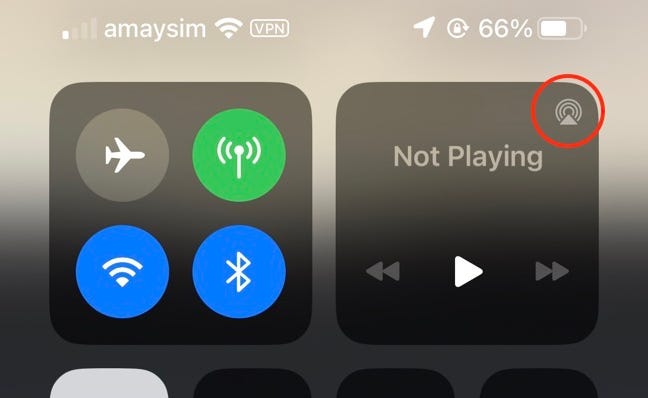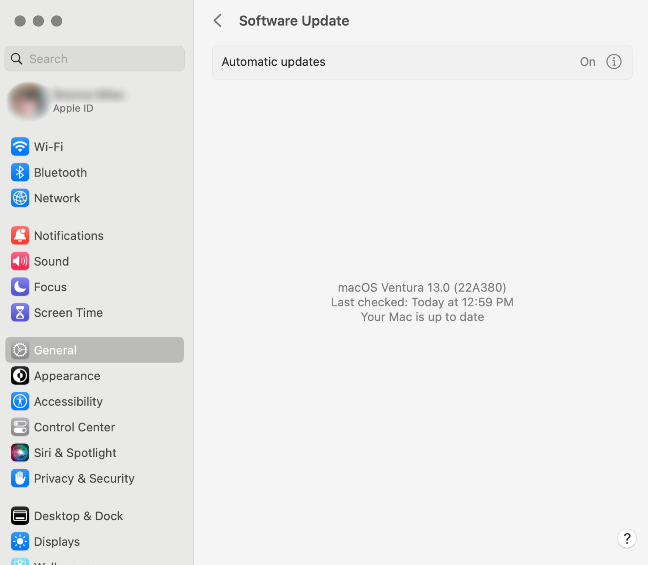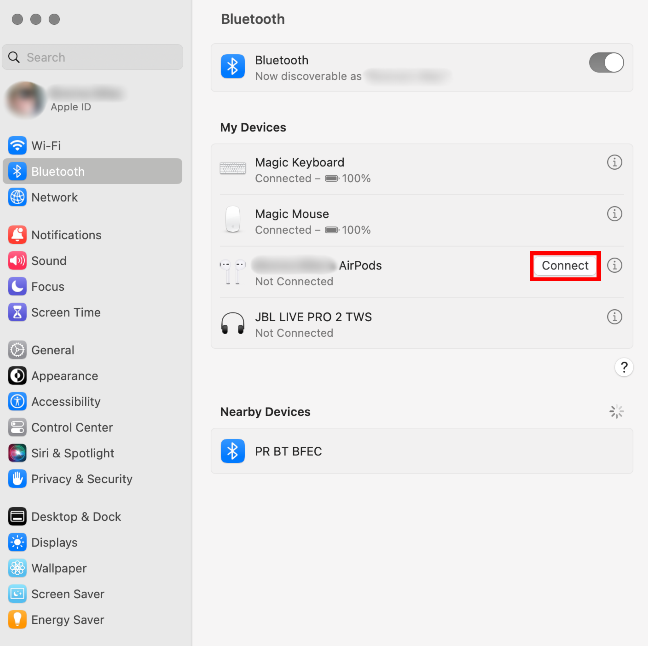
To fix AirPods that keep disconnecting, charge them fully, then reconnect them. You can also disable automatic switching and ear detection under your device’s Bluetooth settings. Additionally, try restarting and updating your iPhone, iPad, or Mac. If these fixes fail, unpair and re-pair your AirPods.
Do your AirPods keep disconnecting from your iPhone, iPad, or Mac? If so, there are several simple fixes you can try such as charging your AirPods to full battery or switching up some settings. We’ll show you how to get your AirPods connected again.
Why Do My AirPods Keep Disconnecting?
AirPods depend entirely on Bluetooth to make the perfect connection to your iPhone, iPad, Mac, or other Bluetooth devices you happen to pair them with. And while wireless connectivity has come a long way, it isn’t perfect.
Various issues can happen during the pairing process. For example, if you’re using your iPhone and a Mac simultaneously, the pairing process can become a bit complicated. Beyond pairing, other issues may cause your AirPods to disconnect, such as a low battery or software bugs.
Let’s look at a few things you can try to get your AirPods working properly again if they won’t stay connected to your other Apple devices for very long. These fixes may also work if one AirPod keeps disconnecting.
How to Reconnect Your AirPods in Control Center
If your AirPods keep disconnecting from your iPhone or other Apple device such as an iPad or Mac, connecting them again is relatively straightforward.
On iPhone or iPad, swipe down from the top-right corner of your screen to reveal Control Center, then tap on the wireless audio icon in the Now Playing box (it looks like a triangle with some circles behind it).

You should see a list of available wireless audio devices, including Bluetooth speakers, AirPlay locations, and your AirPods (if all you see is the Now Playing screen, tap on the wireless audio icon next to the playback controls).

From here, tap on your AirPods to route audio to them.

If you’re using a Mac, click on Control Center at the top of your screen, then the wireless audio icon. You can then select your AirPods from the list of options.

Alternatively, you can click the Speaker icon and select your AirPods under Output.
If your AirPods don’t appear, try taking them out of your ear and putting them back in the case. Put the AirPods back into your ears and try again.
This is a temporary “fix” for routing audio to your AirPods (as long as they’re detected, within range, and have power), but it does little to address the reason they disconnected in the first place.
Charge Your AirPods
If your AirPods suddenly disconnect and won’t reappear, they may have run out of charge. We’ve noticed issues with the original AirPods and the AirPods Pro, where a healthy battery percentage is reported one minute only to drop to 0% the next, likely due to a glitch with the way the remaining charge is reported.
Putting your AirPods into their charging case and keeping it open should show you a summary of your total remaining battery. If your battery is low, allow your AirPods to charge fully, and then try connecting to see if that fixes your issue.

Poor battery life is a problem for AirPods that start showing their age. Eventually, your AirPods will lose a significant percentage of their total charge and require more frequent charging.
Apple runs a battery service program for AirPods that costs around the same price as replacing the earbuds themselves. This is arguably one of the biggest problems with Apple’s wireless earbuds.
If your AirPods keep disconnecting with a full battery, you can try the additional fixes below.
Disable Automatic Switching Between Devices
Apple advertises that AirPods will automatically switch between devices based on what you’re currently using. While this behavior is supposed to be intelligent, it doesn’t always work in ways you’d expect.
If you’re using your iPhone and Mac simultaneously, for example, your AirPods may randomly disconnect from one device and connect to another. Luckily, you can disable this behavior on a per-device basis.
This means you don’t have to turn it off entirely for all devices, but rather you can exclude devices (for example, switch between your iPhone and Mac, but not your iPad).

On an iPhone or iPad, head to Settings > Bluetooth and tap on the “i” button next to your AirPods. Under “Connect to this iPhone/iPad,” choose “When Last Connected to This iPhone” to disable automatic switching.

On a Mac, you’ll find the same option under System Settings > Bluetooth by clicking the “i” next to your AirPods and changing “Automatically” to “When last connected to this Mac” instead.

Disable Automatic Ear Detection
Automatic Ear Detection is another smart AirPods feature that can help save you battery life, especially if you’re prone to leaving your AirPods outside of their case. The feature uses sensors on the AirPods themselves to detect when they’re in your ears and then uses this information to do things like turn the AirPods on or off.
Problems with the sensors can cause your AirPods to disconnect. However, you can disable automatic ear detection under your AirPods settings.
On your iPhone or iPad, head to Settings > Bluetooth and tap on the “i” button next to your AirPods, then disable the “Automatic Ear Detection” toggle.

You’ll find the same option on a Mac under System Settings > Bluetooth > AirPods Settings by clicking the “i” button next to your AirPods.

Automatic Ear Detection is an AirPods setting, so disabling it once will disable it everywhere.
Restart Your iPhone, iPad, or Mac
Restarting your iPhone, iPad, or Mac can fix all sorts of problems, so it’s worth a try if you can’t get your AirPods to maintain a connection (or connect at all).
There are different instructions on how to restart an iPhone depending on which model you have, but the easiest way is to simply ask Siri to “restart my iPhone” and then confirm the request.

Alternatively, you can use a combination of button presses to turn off your iPhone and then turn it on again. The same goes for iPad and Mac.
Update Your iPhone, iPad, or Mac
Sometimes, Apple releases updates that include fixes for various connectivity issues. So you’ll want to ensure your devices are updated to the latest version of iOS, iPadOS, or macOS.
On iPhone or iPad, go to Settings > General > Software Update. If an update is available, you’ll see it listed and have the option to “Download and Install” or “Install Now.”
On your Mac, go to System Settings > General > Software Update. If an update is available, you’ll see it listed here.

Additionally, you can try triggering an AirPods firmware update manually.
Pair Your AirPods Again
It may be worth trying to pair your AirPods again if things aren’t working properly, especially if you can’t connect at all.
To do this on your iPhone or iPad, first “Forget” your AirPods under Settings > Bluetooth by tapping the “i” button next to your AirPods, then using the “Forget This Device” option at the bottom.

Now, reconnect your AirPods by placing them in the case and holding them next to your iPhone or iPad.
On your Mac, go to System Settings > Bluetooth. Click the “i” next to your AirPods and select “Forget This Device.”

To pair your AirPods, place them in the charging case and open the lid. Go to System Settings > Bluetooth. Then, press and hold the setup button on the back of the case. Select your AirPods from the My Devices list and click “Connect.”

When you pair your AirPods, they pair with the Apple ID linked to that device. Any other devices that use the same Apple ID (Mac, iPad, Apple Watch, Apple TV, and so on) will automatically pair, so you only need to do this once.
Contact Apple for Further Help
If your AirPods keep disconnecting from your iPhone, iPad, or Mac, there’s a possibility that they’re damaged or have a manufacturing defect.
If this is the case, it’s typically best to replace your AirPods (either with an AirPods warranty claim or by purchasing a new pair).
You can see your warranty status under Settings > Bluetooth by tapping the “i” button next to your AirPods. Even if your warranty has expired, it might be worth taking your AirPods to an Apple Store to see if they can help you diagnose the problem. Head to Apple Support to start the process.
Further Troubleshooting Tips
There are only so many fixes to try when your AirPods keep disconnecting from your iPhone or other Apple device. Additional issues you may experience include AirPods not switching automatically between devices, unwanted behavior like notifications being read out loud, or a single AirPod refusing to work at all. Luckily, these guides can help you troubleshoot.
